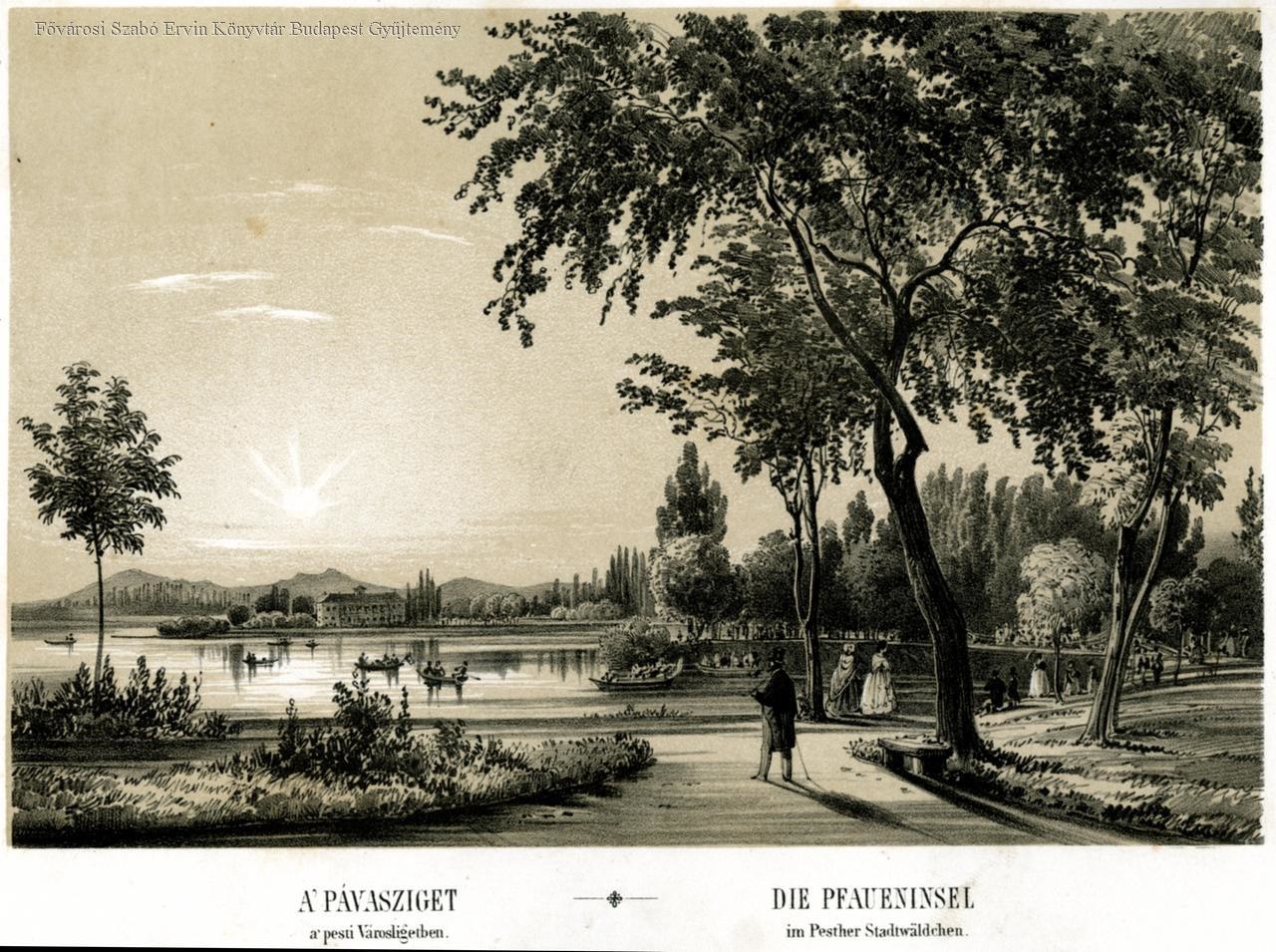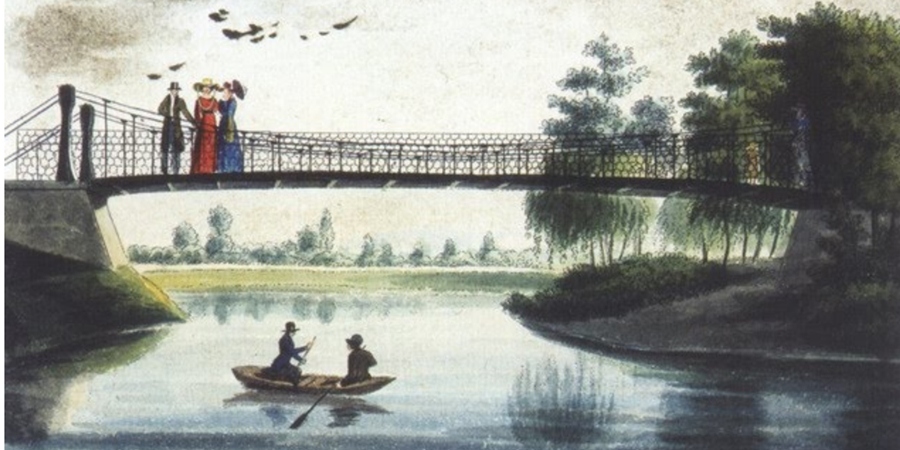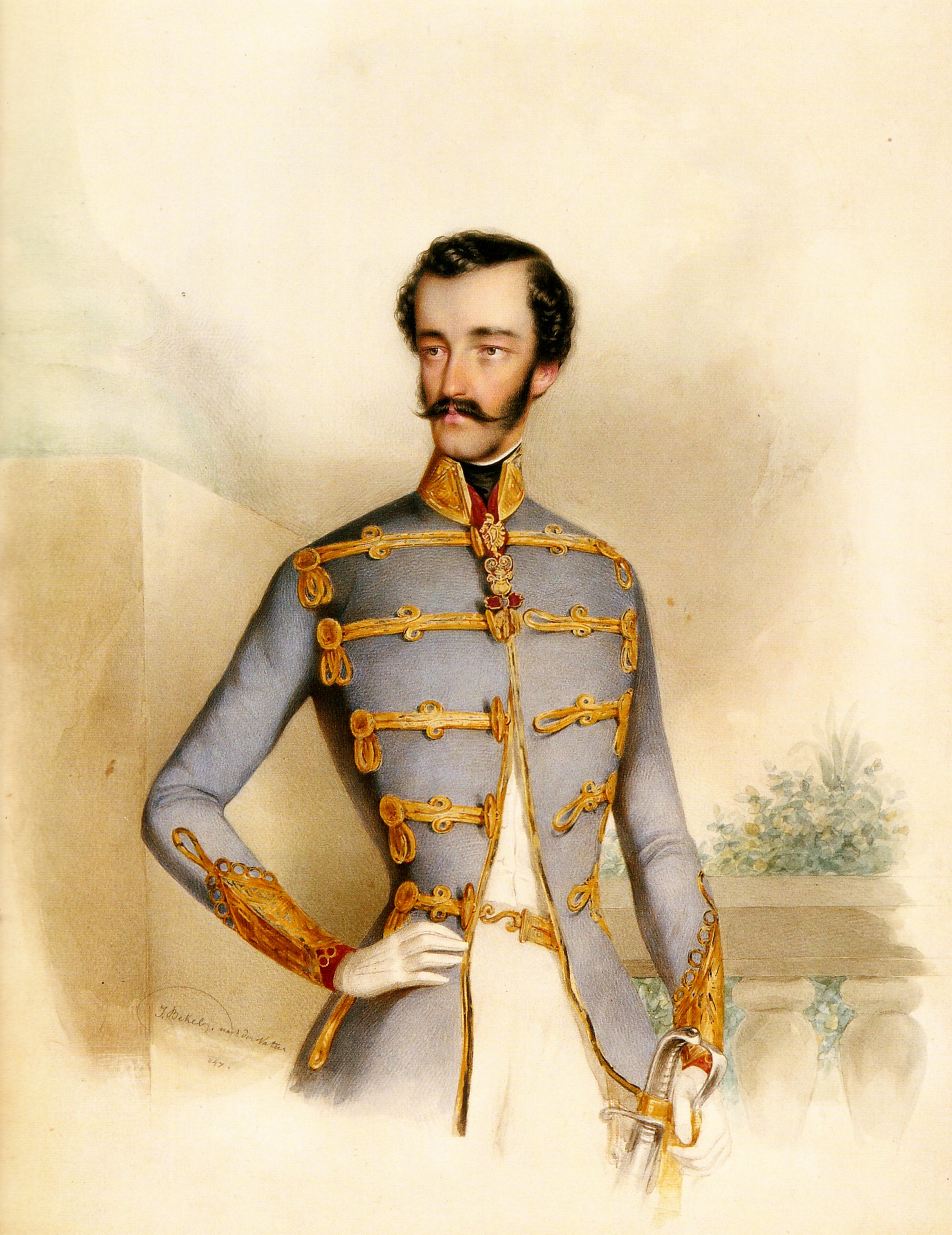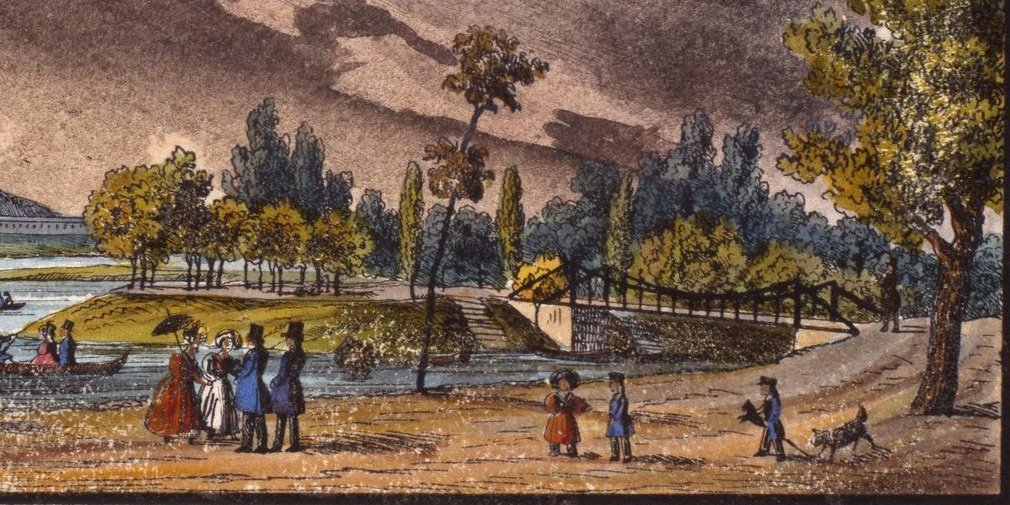In the lake in Városliget, there were two islands in the 19th century: the Széchenyi Bath is now located on the territory of the former larger island, while on the smaller island there is the Vajdahunyadvár. The bridge to the smaller island was built in 1826; it was about 22 meters long and barely 2 meters wide and it was built for the convenience of pedestrians. But why was it called the Wire Bridge? Because in part it is really made of wire, i.e. metal wires.
In terms of the structure of the Wire Bridge in the Városliget, it was a suspension bridge, the first in Pest in this aspect, and almost a quarter of a century ahead of the Chain Bridge, which also had a suspension bridge structure. However, the bridge in the Városliget was not held by chains but by wire ropes. This was still a very new technology at the time, with cables beginning to be used in bridge construction in the 1820s, mostly in France and the United States.
Due to his profession as a Viennese sieve master, Anton Fritz was well acquainted with iron wires and, as he was also interested in novelties, he also followed foreign bridge-building initiatives. Moreover, he himself successfully used the material on smaller pedestrian bridges.
He designed and built the small cable bridge in the Városliget. This was the second such bridge in Hungary, as a year earlier, in 1825, he had already made a similar structure in Pozsony (today Bratislava, Slovakia).

The Városliget at the beginning of the 19th century (Source: FSZEK Budapest Collection)
There was a wooden bridge on the site of the Wire Bridge before, but it had to be demolished because it had rotted and become life-threatening. The Beautification Committee of Pest first wanted to build a stone bridge in its place, but the idea was soon discarded because it could only have been built at a disproportionately high cost on the soft soil of the Városliget.
At this time, in the fall of 1825, Anton Fritz applied. The solution proposed by the mastermind was not unknown to the palatine and the other decision-makers, as the bridge in Pozsony (today Bratislava, Slovakia) was well known. Thus, at the end of 1825, the plan was adopted. Construction itself began in the spring of 1826 and lasted for three months. The total cost of the bridge was slightly higher than the planned 5 and a half thousand forints, and was finally completed for 5,978 HUF.
The Beautification Committee wanted to name the bridge after István, the son of palatine József, but this was politely avoided by the palatine. However, he also sent his two children, Archduke István and his daughter, Archduchess Hermina, to the opening, and so the handover of the bridge on August 9, 1826, took place with great splendor.

The bridge on a copper engraving made by János Hofbauer around 1828 (Source: FSZEK Budapest Collection)
What did the little bridge look like? It was as if I was looking at a scaled-down model of the current Elizabeth Bridge, as it was practically a single-span cable bridge.
At the ends of the bridges built of stone stood four cast-iron columns, barely two meters high, and, like many other suspension bridges at the time, were not gate-like, that is, they were not connected at their roofs. A pair of wire ropes holding the structure, wound from iron wires, led through the columns at the four corners of the bridge. A total of 52 suspension cables connected these wire ropes to the bridge deck, which was made of wood. On both sides of the bridge deck, the railing was formed by a honeycomb-like wire mesh, which also contributed to the Pest audience calling the bridge the Wire Bridge.

Archduke István, after whom the city of Pest wanted to name the bridge. Watercolor by Josef Bekel (Source: Wikimedia Commons)
Although at first glance the Wire Bridge appears to be a weak structure, it still stood for 50 years, it was not until the 1870s that it became defective. A committee sent out by the city council thoroughly inspected the bridge in 1874 and decided to demolish it because it was deemed unsafe to renovate.
The Budapesti Hílrlap commemorated the old bridge and the "old" Városliget on 14 June 1885 as follows:
“The old Városliget is gone, and there is a great exhibition space in the firework square and in the annexes; on the site of the old circus is the pool of the large fountain and surrounded by flower beds, the wire bridge was replaced by a wooden bridge; the sprinkler irrigation wagons were replaced by plumbing rubber pipes and the dilapidated omnibuses by newer, more beautiful ones ”
Unfortunately, nothing was left of the Wire Bridge in the Városliget, only a few drawings and sketches, but we can say that this bridge was indeed a novel work, since this construction procedure began to spread in the world at that time. The later Chain Bridge was built with a slightly different technology, as it was held by chains, but the principle was the same as in the case of late relative of the Wire Bridge, the Elizabeth Bridge.
Cover photo: The engraving of the bridge by Carl Vasquez in 1837 (Source: FSZEK Budapest Collection)





































Hozzászólások
Log in or register to comment!
Login Registration